As demand for quick commerce grows, the constant presence and pressure of riders in c-stores is leaving staff in tears. Can the retailers and aggregators fix the problem?
Rapid grocery delivery is really humming. Some convenience stores are now seeing as much as half of total sales come via aggregator apps such as Deliveroo and Uber Eats – which in turn are seeing grocery orders make up an ever-higher proportion of their deliveries.
But these smaller stores where app orders are flying out from – while placed perfectly for fast delivery within highly populated, non-city pockets across the country – simply weren’t designed to double up as mini-fulfilment centres as well as welcoming shops. And they’re feeling the strain.
Staff are struggling to cope with picking against the clock while also serving walk-in customers, with some left in tears. The stores themselves don’t have the space to function as courier collection points, often leading to a challenging, crowded environment. And the juggling of multiple devices for multiple channels is leading to inefficient and increasingly complex operations.
So, what can retailers do to keep both types of customer – in person and online – happy, their staff content, and operations running smoothly?
While it may have peaked during the pandemic, the trend towards hasty home delivery shows few signs of abating, and it’s c-stores that are the new focus of growth. Tesco’s Whoosh was expanded from a handful to more than 1,000 Express stores in 2023 and is now arriving in larger stores too. Meanwhile aggregator apps continue to spread across supermarket estates. And according to the Association of Convenience Stores’ latest figures, 47% of independent retailers now offer home delivery or click & collect.
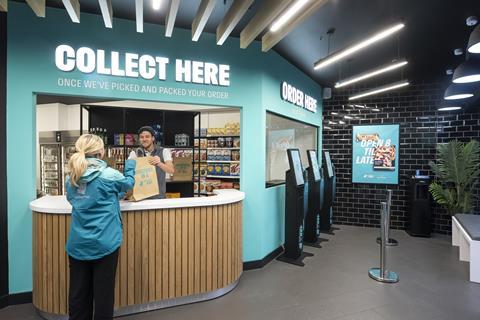
The dark store model that emerged in the early days of quick commerce, during the pandemic, worked extremely well in terms of getting groceries to customers fast. These dedicated micro-fulfilment centres, tucked away under railway arches and on small industrial estates, avoided the hassle of face-to-face customers, allowing for lightning-fast picking and dispatch by the likes of Getir and Gorillas. But while the economics of the model didn’t stack up – meaning most of the major players have now departed the UK – they left behind a consumer appetite for groceries delivered quickly to the doorstep.
In their place, supermarkets, symbols and independents have established their own quick commerce offerings and forged partnerships with aggregator apps. Some even consider it essential to their survival.
Grocery delivery ‘here to stay’
“Home delivery [in convenience] is becoming mainstream now,” says Mike Callachan, CEO of Snappy Group, which works with independents and symbol groups such as Premier, Co-op, Costcutter, One Stop and Nisa on their delivery apps. “Retailers are aware this is something they’re going to have to do if they want a good business. You have your early adopters. You have those that join the party. And then there’s the long tail of people that don’t like change – who will either be forced to do it or go out of business.”
Uber Eats UKI & Northern Europe GM Matt Price agrees: “[Grocery] delivery is very clearly here to stay.”
Indeed, in the past two years, the number of people who have placed a grocery order on Uber Eats in the UK has nearly doubled. And Deliveroo’s grocery business accounted for 16% of its sales in the second half of last year.
“None of our stores have enough staff to meet the demand of Whoosh, work stock and maintain sanity”
The established retailers’ significant advantage over the dark store players – of which only Gopuff and Zapp persist – is their existing network of stores situated close to customers; the creation of which proved too costly for the rapid players starting from scratch.
“We don’t expect rapid delivery to drop off entirely, but we are seeing far fewer dark stores, with more of the rapid delivery now coming out of existing bricks & mortar stores,” says Rueben Scriven, senior analyst at Interact Analysis. “What grocers and dark store providers have realised is that rapid delivery makes a lot more sense as a value-add on, rather than a full alternative. Take Tesco’s Whoosh model. It’s a great way to drive incremental sales for its Express stores given it’s already got the inventory in these locations selling to existing customers.”
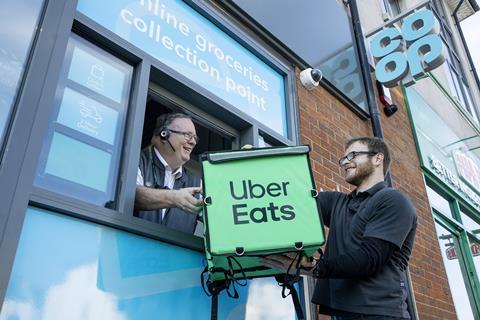
As well as the aggregator apps expanding partnerships within the sector, retailers and wholesalers are piling in with their own platforms too. In February, Co-op launched rapid delivery app Peckish, which it will offer to independent c-stores seeking to tap home delivery. It’s making a £1m investment into Peckish in its first year and is hoping to sign up more than 1,000 stores in the next 12 months. In the same month, wholesale giant Booker rolled out Scoot, its own delivery service and online ordering platform for its symbol retailers.
“We anticipate most rapid delivery growth will come from existing bricks & mortar stores, driving incremental sales on a per-store basis,” Scriven says.
A ‘nightmare’ for staff
But here’s the rub: most stores and their day-to-day operations were not designed with rapidly picking and dispatching orders in mind. And the bodge is proving problematic.
In January, The Grocer revealed how meeting the growing demand for rapid delivery service Whoosh was proving “a nightmare” for Tesco staff, who were venting on online forums that being expected to handle the influx of orders alongside their daily tasks was “a piss-take”.
One worker reported being in tears after a nearby store’s Whoosh orders were turned off and diverted to their understaffed store. Another complained: “Whoosh is the absolute worst thing to happen to Express stores… None of our stores have enough staff to meet the demand of Whoosh, work stock and maintain sanity.”
Tesco told The Grocer its labour allocation methods were continually improving as Whoosh grows in order volume, and that hours were set in advance based on a store’s size, range and forecasted orders. The supermarket added it works closely with colleagues to address resourcing concerns and ensure stores were prepared.
The issue is not unique to Tesco. Sainsbury’s workers have also offloaded online about the picking pressures of its Chop Chop service and aggregator app partnerships. “It’s ridiculous how much the staff have to do,” wrote one. “Staff as a whole have to say enough is enough.” Another said demand was “now completely out of hand”.
Across many major supermarkets, it’s understood that pick rate and the time it takes for the picking of an order to start – while always monitored – are now being used to pressure staff into working faster by managers.
“It feels like it’s very close to breaking point already, to be honest,” one worker posted.
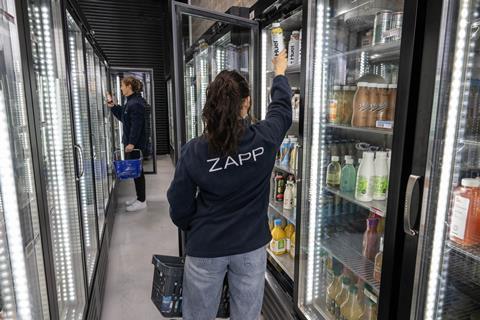
Smaller stores also struggle under the same staffing strain. After all, if there’s a queue of two customers and a courier waiting, which task takes priority? The issue is exacerbated if store staff have to make the deliveries themselves, which they do if using one of the new wave of convenience-focused delivery apps.
Waiting couriers, meanwhile, are under their own time pressure. While grocery orders pay 12% more per minute than restaurant orders all told, according to Rodeo analysis, and two-thirds of couriers prefer them over restaurants, they ultimately get paid for the delivered order, not the time waiting at a store for it to be prepared. Every second spent waiting diminishes their hourly pay.
So it’s little surprise the courier/store staff relationship can become strained. Store staff complain of rude couriers waving phones in their faces and following them around the store to hurry their picking. Couriers complain of rude store staff who aren’t prepared for their arrival.
“I tell my team: don’t worry about the other grocers, see what McDonald’s are doing”
Chris Conway, Co-op
Customers are noticing the issues too. Research in 2023 by Pricer found a fifth of UK consumers felt they received lower levels of customer service in store because staff were stretched sorting out online orders and collections.
The same proportion said they had faced delays at the checkout because staff were fulfilling online orders rather than manning the tills. Just under a third complained aisles were cluttered with trolleys to fulfil orders – and similar complaints often crop up in the Grocer 33 survey.
Big Macs not big four
“I tell my team: don’t worry about the other grocers, see what McDonald’s are doing,” says Chris Conway, Co-op e-commerce director and managing director of quick commerce, who’s leading Co-op’s goal to take 30% of the UK quick convenience market by 2027.
“Because you see their technological innovations and going digital, how in new restaurants they’ve made space for [delivery] riders and how they’ve changed how the restaurant operates… Effectively it’s a mini-fulfilment centre and a restaurant as well. It’s fascinating and it’s how I see the future of Co-op going.”
It makes sense, given service restaurants have had a few years’ head-start on grocery when it comes to balancing the in-store/delivery divide. McDonald’s UK&I launched its £280m ‘Convenience of the Future’ upgrade programme in 2022, the chain’s “most significant restaurant redesign in decades”.
“When I started at McDonald’s we only had three channels for customers to order from. Today we have 12,” Simon Duffy, delivery director, McDonald’s UK&I tells The Grocer. “Yet despite the rapid change in customer expectation and the addition of channels to respond to this new demand, until recently most restaurants were still operating out of the same footprint they’d always been.”
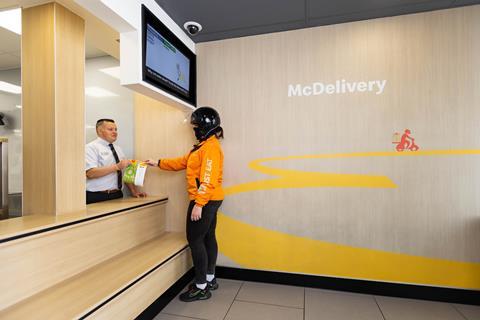
Close to a fifth of all McDonald’s orders are now via McDelivery – for which it partners with Uber Direct. Accordingly, there have been updates in the kitchens to improve accuracy. “There’s no face-to-face customer engagement, which means it’s the hardest channel to get right,” Duffy says. “We pride ourselves on delivering a great customer experience, but when we get delivery orders wrong there’s no opportunity to fix it in the moment. So we have to get it right first time, every time.”
Perhaps most significantly, though, McDonald’s customer and courier-facing areas have evolved greatly.
“From a delivery perspective, one of the most impactful changes has been the creation of a dedicated courier area, which really does benefit everyone,” Duffy says. “We want to give couriers the same great service we give our customers. Providing them with a space where they can wait, stay warm and dry, and more easily collect their orders makes their lives easier and makes them better partners to us. Ultimately, happier, more efficient couriers mean a better service, which means more satisfied customers.”
So far, about 300 restaurants have been updated with the ‘Convenience of the Future’ layout, and it’s now standard for new openings.
“Providing couriers with their own space also returns a more traditional dining area feel to the restaurant; there’s less congestion around the counter, leading to a better customer experience,” Duffy continues. “The waiting area also allows our people to more efficiently serve our couriers, building more collaborative relationships between us and our delivery partners.”
Designing for delivery
While a courier waiting area hasn’t yet been seen in a UK supermarket, many are adapting to smooth the order collection process. In 2022, Co-op trialled a collection hatch at its store in Lewes Road, Brighton, where a staff member hands over orders through a window to click & collect customers as well as delivery app riders. More hatches are understood to be opening this year.
Waitrose introduced the same concept at its newly refurbished John Barnes store in London last year, enabling riders to collect orders without having to enter. The supermarket said it also opened up the possibility of fulfilling orders while stores are closed.
A number of Sainsbury’s stores have points specifically for delivery order collections, and its Sloane Avenue store in London features a hatch. But this month the supermarket unveiled a “dedicated self-serve locker for on-demand orders” at its Pudsey Town Local store near Leeds. Once picked, store staff place orders into the entranceway locker.
Drivers from the aggregator apps and Sainsbury’s own Chop Chop service then use a code to open the locker door and collect the order. The set-up is linked to the store picking systems, and staff are notified if an order has been sitting for longer than half an hour to ensure they can comply with cold chain rules. It’s “the first ‘purpose-built’ locker system of its kind in a convenience store”, Sainsbury’s says.
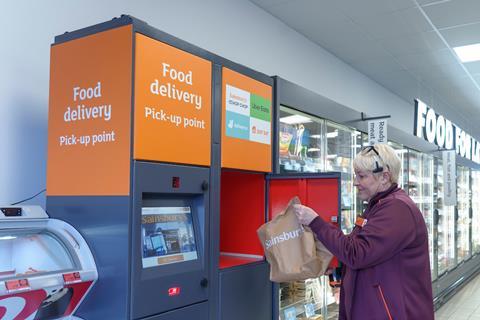
Uber “expects delivery to become an increasingly large part of [grocery stores’] business”, adds Price. “And we’re talking to many grocers as to how you ultimately design the best experience for people who are still in your stores as well as couriers who are coming to do pick-up. Restaurants are evolving and adapting based on the immense demand coming through food delivery. What the best of them are doing is trying to create a separate space for couriers and getting really good at signposting to make the experience as seamless as possible once the courier gets on premise.
“Importantly, they’re also making sure their operations are strong in order to carry out the hand-off accurately and quickly, so they don’t have couriers waiting around but rather the product quickly getting to the end consumer. Those principles at play with the restaurants should inspire grocers as to how they evolve.”
The picking process is also getting faster and more efficient all the time – helping make the handover less fraught.
“Picking is improving, with aggregators stepping up their game,” explains Joe Heather, regional general manager for Northern Europe at Deliverect. “Deliveroo, Uber and Just Eat now have dedicated retail picking apps, making picking fully portable. User experience enhancements have also made a difference, ensuring greater clarity and accuracy when picking, particularly for distinguishing between product sizes and bundled items, which were previously difficult to manage from a printout.”
Rather than manage multiple pinging handsets, with orders coming in from the various aggregator apps, grocers are increasingly collating orders on a single device with software to put together the most efficient picking route, regardless of the channel the order has come in on.
“Using one unified device has been the game-changer, as it standardises the picking process across all orders,” Heather says. For starters, it’s easier to train staff to use one device rather than three or four, while they also offer clearer product images for faster identification, optimised picking routes and improved scan-to-pick accuracy. “As a result, picking has become significantly faster and more precise,” Heather adds.
In addition, retailers are increasingly considering the impact of rapid delivery ahead of launching new stores. “When we design and launch new stores or refinish stores, quick commerce is part of that. Two years ago, it wasn’t,” says Co-op’s Conway. “We completely and fundamentally changed how we operate as a business. We’ve also incorporated it into investment appraisal as well.
“So when we look at new sites and whether we open them or not, the quick commerce element is now part of that process. Is it a site that’s going to do well with quick commerce? Is it a site that’s going to do X amount of orders? What space do we need? Can the couriers get there? What council restrictions are there?”
The demand is even changing which products appear on shelves. While two ketchup facings might be typical for a convenience store “on quick commerce, it actually needs five. So we’re putting five in,” Conway says. Even if “it looks a bit weird for the consumer walking in the door”.
The store pick model is undoubtedly putting the pressure on retailers. But now rapid delivery has transcended being a mere pandemic phenomenon, grocers are showing greater willingness to invest and adapt. Which is just as well, Conway adds, because get it right and “the world’s your oyster”.
Where are Uber’s courier pickers?
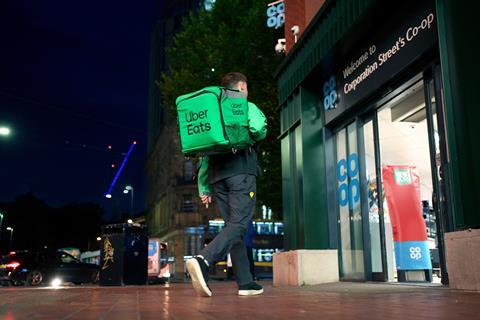
In June last year, Uber Eats announced its couriers would soon be picking items from store shelves as well as delivering the orders.
Hailing it as a first in Europe for a delivery platform, the ‘Courier Pick & Pack’ service (already rolled out by Uber in the US, Japan and Australia) promises understaffed smaller stores a straightforward way to start e-commerce, as well as a way to help larger businesses deal with spiky demand.
So retailers will be able to turn the courier pick option on and off and will pay for the privilege of having Uber couriers pick the order.
So far, so good. But where is it?
Late last year, Alex Troughton, Uber’s regional general manager of grocery and retail, EMEA & UK, told The Grocer the company had been “squirrelling away in the background to get it launched”.
“These things aren’t easy and take a lot of time,” Troughton said. “We’re making sure we get it right from launch because it’s brand new.”
One issue, The Grocer understands, is it’s simply too expensive for retailers. But there are also security concerns around couriers wearing bike helmets coming into stores and taking items from shelves.
A survey last year by rider platform Rodeo found 77% of its couriers were against the idea.
This month, Uber Eats UKI & Northern Europe GM Matt Price said there were “conversations ongoing” with UK merchants “as to how to do this in the right way”, but there was “nothing more to share at this stage”.
“Ultimately the reason it’s being deployed is it’s a more efficient and effective way to do the picking, so that will ultimately be the reason it’s embraced or not.”



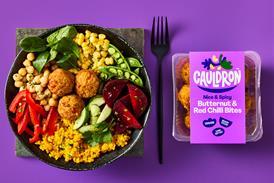
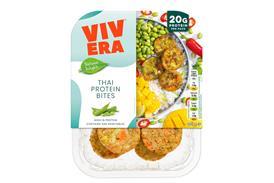
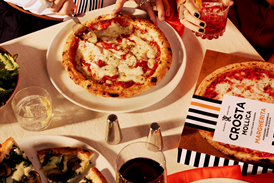
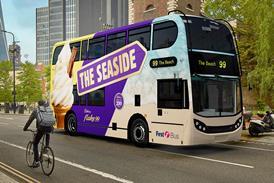
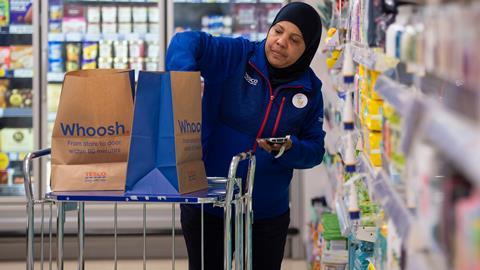

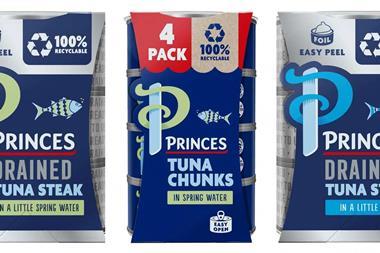
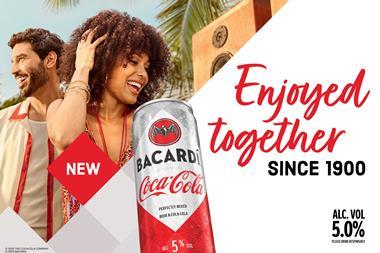
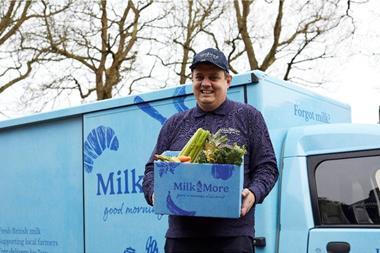
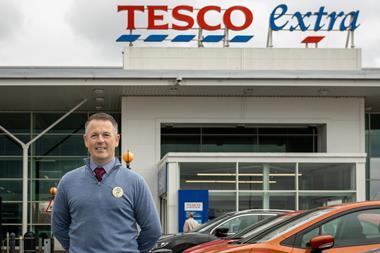
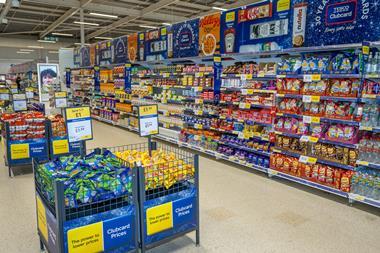
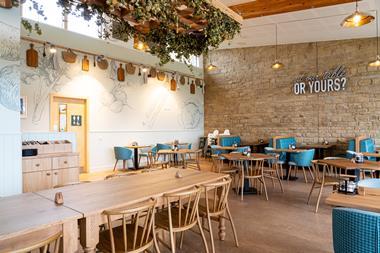
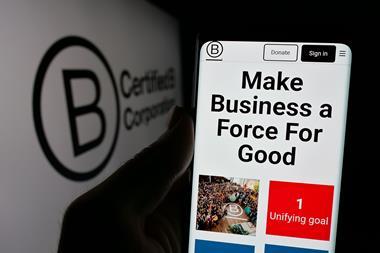



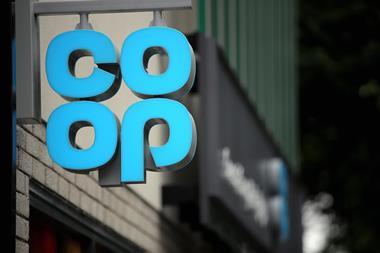
No comments yet